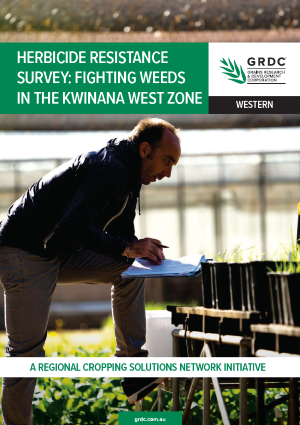Herbicide resistance survey: fighting weeds in the kwinana west zone
Herbicide resistance survey: fighting weeds in the kwinana west zone
Published: 1 Oct 2019
Weeds are costing Australian grain growers an estimated $3.3 billion a year or $146/ha in lost revenue and control costs.
According to experts, weeds will continue to be one of the industry’s biggest challenges with estimates that resistant weeds are costing the industry an additional $187 million each year, equating to an average of more than $8/hectare.
Annual ryegrass is the most prolific and damaging weed to Australia’s grains industry, with eight million hectares infected by the weed, costing growers an estimated $93 million in lost revenue annually.
The Australian Herbicide Resistance Initiative (AHRI), with investment from the Grains Research and Development Corporation (GRDC), is researching and developing new ways for growers to tackle this costly yield constraint to improve the profitability of Australian grain growers.
Herbicide resistance in annual ryegrass to Group A and Group B post-emergent chemicals is widespread and a recent analysis of a limited focus paddock survey shows that resistance to pre-emergent herbicides is increasing.
Take-home messages
- In the WA wheatbelt Group A and Group B post-emergent herbicides are now widely accepted as ineffective on a large proportion of annual ryegrass populations.
- Low levels of resistance were observed in the annual ryegrass samples controlled with pre-emergent herbicides; however, pre-emergent herbicides remain the most effective tool to control annual ryegrass field populations.
- No resistance was found to mixtures of pre-emergent herbicides or double-knock treatments.
- Testing for herbicide resistance, including herbicide mixtures and new herbicides coming onto the Australian market, is critical for accurately assessing resistance levels on a paddock-by-paddock basis to ensure use of highly effective herbicide solutions.
Download PDF
Region: West
GRDC Project Code: UWA1803,

